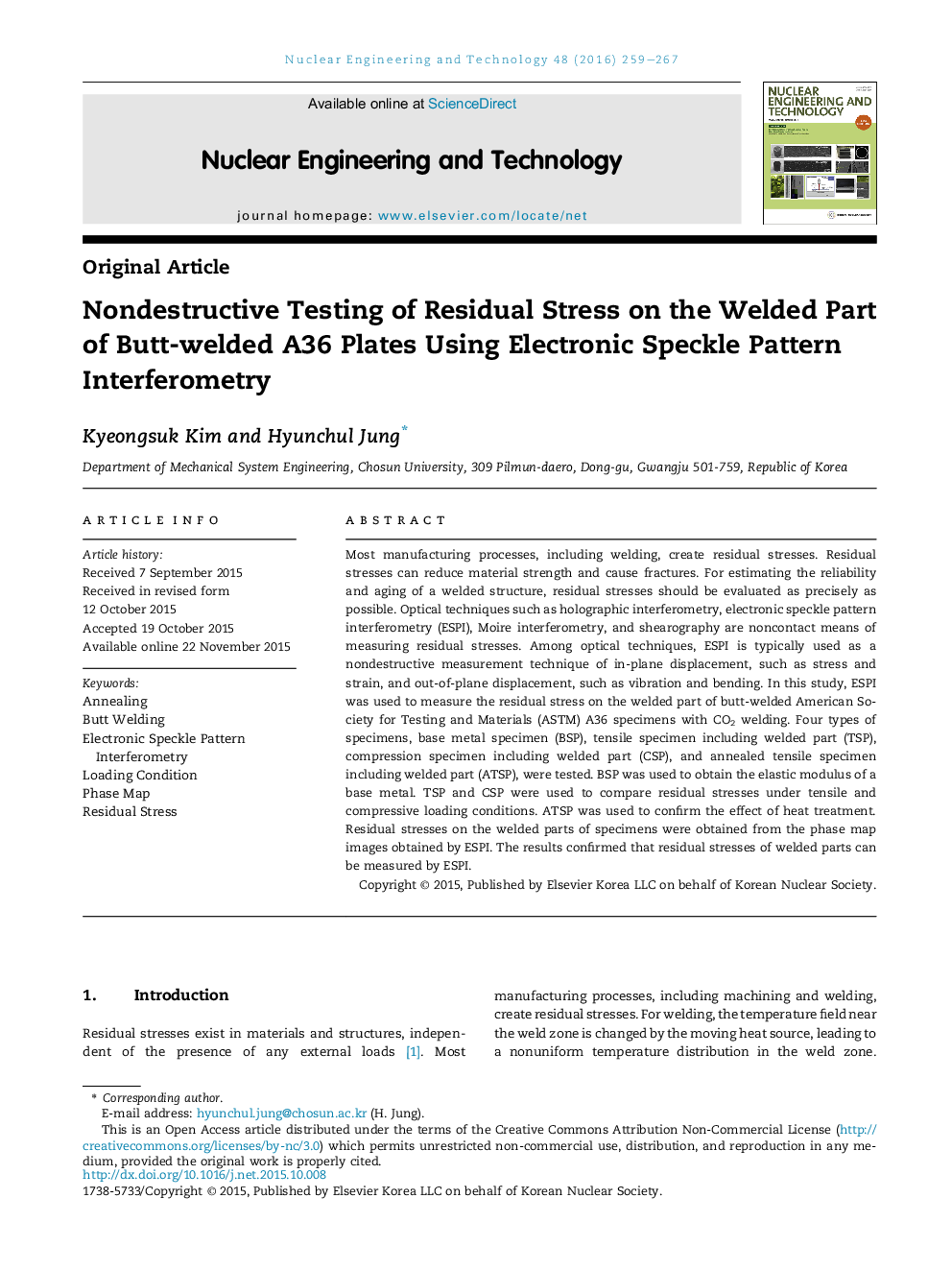| Article ID | Journal | Published Year | Pages | File Type |
|---|---|---|---|---|
| 1740020 | Nuclear Engineering and Technology | 2016 | 9 Pages |
Most manufacturing processes, including welding, create residual stresses. Residual stresses can reduce material strength and cause fractures. For estimating the reliability and aging of a welded structure, residual stresses should be evaluated as precisely as possible. Optical techniques such as holographic interferometry, electronic speckle pattern interferometry (ESPI), Moire interferometry, and shearography are noncontact means of measuring residual stresses. Among optical techniques, ESPI is typically used as a nondestructive measurement technique of in-plane displacement, such as stress and strain, and out-of-plane displacement, such as vibration and bending. In this study, ESPI was used to measure the residual stress on the welded part of butt-welded American Society for Testing and Materials (ASTM) A36 specimens with CO2 welding. Four types of specimens, base metal specimen (BSP), tensile specimen including welded part (TSP), compression specimen including welded part (CSP), and annealed tensile specimen including welded part (ATSP), were tested. BSP was used to obtain the elastic modulus of a base metal. TSP and CSP were used to compare residual stresses under tensile and compressive loading conditions. ATSP was used to confirm the effect of heat treatment. Residual stresses on the welded parts of specimens were obtained from the phase map images obtained by ESPI. The results confirmed that residual stresses of welded parts can be measured by ESPI.
